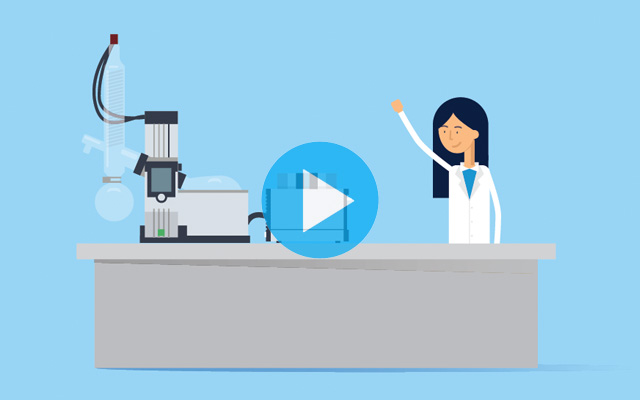What to Know Before Buying a Vacuum Pump
Different processes require varying amounts of vacuum or flow to operate properly

Maintenance Tip: Vacuum PumpsRegularly checking for wear and tear in your vacuum pump is critical to ensuring a long, problem-free life for the instrument. Wearing parts should be monitored and replaced based on both their time in service and on the application. It’s important to identify maintenance issues before they lead to downtime. With the high quality of most vacuum pumps however, basic maintenance generally only needs to be done every one to two years. |
How will the method of analysis affect which vacuum pump should be used?
Different processes require varying amounts of vacuum or flow to operate properly. If working with an instrument such as a lyophilizer, which requires a very low amount of ultimate vacuum, a rotary vane pump may be required (for oil-free applications, a dry scroll pump can be used). For most other laboratory purposes, a diaphragm pump can be a more robust option, as they are easier to maintain and can have chemical-resistant coatings applied. For specialty processes such as field emission microscopy, high and ultra-high vacuum models may be best.
Will the chemicals and reagents used in the sample preparation process influence which type of vacuum pump is best?
Depending on the process or reagents used with the vacuum pump, certain precautions must be taken. Pumps which use oil—such as the rotary vane pump— run the risk of vapors from the process breaking down the oil, necessitating changing and disposal. Likewise, diaphragm pump vacuums can break down when in the presence of certain vapors. In this case, it is wisest to purchase a diaphragm pump which is resistant to the reagents or chemicals being used.
How do highly sensitive samples/processes affect which type of vacuum pump to use?
The sensitivity of the sample, process, or a requirement for accurate control over the conditions of the vacuum pump can impact the configuration required. Some pumps come with no control option, which assumes the vacuum pump will always be operating at maximum potential. Manual control pumps may have adjustable control options with either pinch or bleeder valves, giving an approximate control. Electronic two point control gives the researcher the ability to configure a set point for vacuum, which the pump regulates by turning on and off, or opening a solenoid to control pressure. Electronic adaptive control allows for completely automated control, where set points are regulated by controlling the motor speed to give highly accurate vacuum pressures.
For more vacuum pump buying tips, see our video at LabManager.com/vacuum-pumps-video
Start your vacuum pump search at LabManager.com/ProductFinder/Vacuum-Pumps

